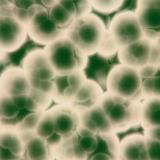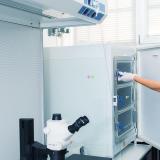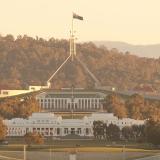Mitochondrial donation is an assisted reproductive technology (ART) that may assist women with some forms of mitochondrial disease to have a healthy child.
Mitochondrial disease is a group of conditions caused by mutations in either mitochondrial DNA or nuclear DNA. Severe mitochondrial disease can have a devastating effect on families, including:
- the premature death of children
- painful, debilitating and disabling suffering
- long-term ill-health
- poor quality of life.
In Australia, between one in 5000 and one in 10,000 people develop severe mitochondrial disease during their lifetime. Around one child per week is born with a severe form of the disease.
How does mitochondrial donation work?
Mitochondrial donation may allow women with mitochondrial disease, caused by mutations or errors in their mitochondrial DNA, to have biological children without transmitting the disease to their children.
The term mitochondrial donation refers to several specific techniques aimed at ensuring only healthy mitochondria from a donated egg are passed on to an embryo.
Reproductive technology specialists can use different mitochondrial donation techniques to create an embryo which contains the:
- nuclear DNA from a woman and a man (the prospective mother and father)
- healthy mitochondria from an egg donated by another woman (the mitochondrial donor).
As the egg cell or ovum passes mitochondria to the next generation, this approach minimises the risk of a prospective mother transmitting mitochondrial disease to her child. It cannot, however, cure people with existing mitochondrial disease or prevent mitochondrial disease caused by a mutation in the nuclear DNA.
Different mitochondrial donation techniques involve transferring the nuclear DNA into the doner egg at different stages of its development. The main techniques are:
- Maternal spindle transfer involves transferring the mother's nuclear DNA to an unfertilised donor egg that has had the original nucleus removed and then fertilising the egg with sperm.
- Pronuclear transfer involves the fertilisation of both the mother's and a donor’s egg with the father's sperm and then transfer of the parents' nuclear DNA from a fertilised egg to a fertilised donor egg that has the original nucleus removed.
There are also other mitochondrial techniques under investigation for use to address the impact of mitochondrial disease, including germinal vesicle transfer, first polar body transfer and second polar body transfer.
Mitochondrial Donation in Australia
In October 2022, the Parliament of Australia approved amendments to the Research Involving Human Embryos Act 2002 and the Prohibition of Human Cloning for Reproduction Act 2002 to allow the phased introduction of mitochondrial donation:
- in research and training activities initially, including in a clinical research trial
- then for human reproductive purposes subject to the outcome of the clinical research trial and further amendments to the relevant regulations.
Information on the licensing scheme that allows mitochondrial donation techniques to be used can be found on the mitochondrial donation licensing scheme page.


